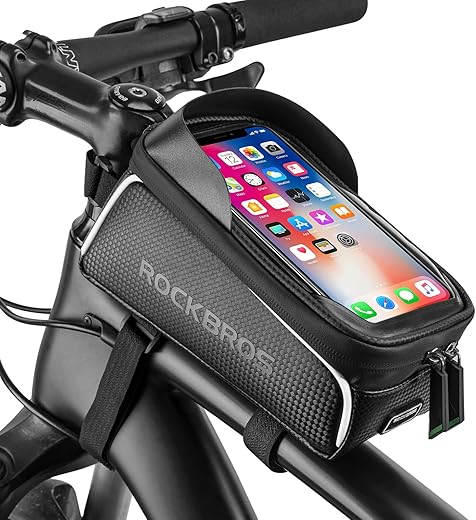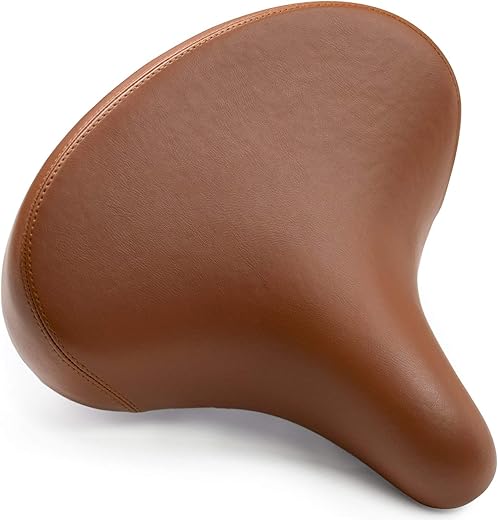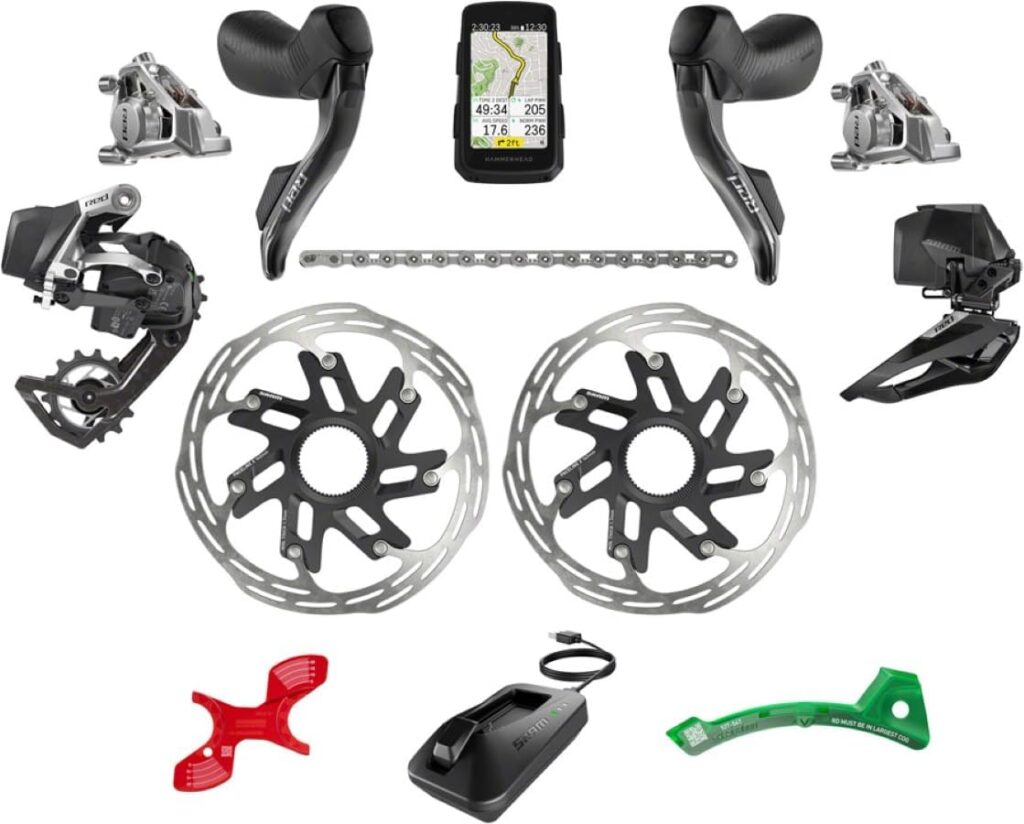Introduction to Mountain Biking on Rugged Terrains
Did you know that over 40% of mountain bikers admit to seeking out the most challenging trails to test their skills? There’s something undeniably thrilling about navigating through rocky paths, steep descents, and muddy tracks. As both a rider and an enthusiast, I find that mountain biking on rugged terrains offers not just an adrenaline rush, but also a profound connection to nature and an unbeatable sense of accomplishment.
In this article, I will delve into the exhilarating world of mountain biking, focusing on the unique requirements and features of bikes designed specifically for challenging terrains. From understanding the intricacies of rugged trails to emphasizing the importance of durability, my aim is to provide you with comprehensive insights that will enhance your riding experience. Join me as I share my personal recommendations and insights gleaned from countless rides, ensuring you’re well-equipped for your off-road adventures.
Understanding Rugged Terrain
When I think of rugged terrain, I picture steep inclines that test my climbing endurance, rocky paths where every pedal stroke counts, and muddy trails that add an element of unpredictability. Each characteristic presents its unique challenges and demands specific adaptations in both rider technique and bike design.
Characteristics of Rugged Terrain
- Steep Inclines: Climbing steep hills requires not only physical strength but also the right gear ratio for maximum efficiency. A bike with a lower gear can make these ascents more manageable, allowing me to maintain momentum without exhausting myself.
- Rocky Paths: Riding over rocks requires both skill and a bike built to absorb shock. A well-structured frame and responsive suspension enhance control, making it easier to navigate obstacles without losing speed or balance.
- Muddy Trails: One of the trickiest aspects of off-road riding is maintaining traction on wet and slippery surfaces. A bike designed for such conditions needs aggressive tread patterns and wider tires to grip the ground better, allowing for smoother navigation through mud.
- Technical Features: Many trails feature roots, ruts, and other unexpected obstacles. Adapting to these requires a bike with sharp handling and precise steering response. Bikes built for rugged terrains often incorporate wider bars and shorter stems, enhancing maneuverability.
With these features in mind, I’ve learned that choosing the right mountain bike becomes paramount. The right bike allows riders to tackle these obstacles safely while maximizing performance.
While it may feel tempting to jump onto any bike and head out, understanding these terrain characteristics lays the foundation for selecting a mountain bike that truly meets the demands of the trails. And as we move into the next section, we’ll explore the key features that make these bikes stand out in challenging environments.
Key Features of Mountain Bikes for Challenging Terrains
When it comes to selecting a mountain bike specifically for rugged trails, certain features set them apart from standard bikes. Understanding these components not only enhances performance but also ensures safety and comfort during your off-road journeys.
Frame Material
The frame material of a mountain bike plays a crucial role in its overall durability and weight. While aluminum frames are common due to their balance of strength and lightness, carbon fiber frames offer an enhanced strength-to-weight ratio and can absorb vibrations better. I vividly remember my first ride on a carbon bike—its responsiveness transformed my ability to tackle steep descents confidently.
Suspension Systems
Suspension is your bike’s lifeline on rough terrain. I recommend looking for full suspension systems, which include both front and rear shocks, providing unparalleled control over rocky paths. Hardtail bikes, featuring only front suspension, can be lighter and better for climbing, but may not absorb as much impact on downhills. For instance, the Trek Fuel EX series boasts an adjustable suspension that adapts to varying trail conditions.
Tire Types
The right tires are critical for maintaining traction in challenging environments. Look for wider tires with aggressive tread patterns, which enhance grip on both muddy trails and rocky surfaces. I personally swear by the Maxxis Minion DHF, a tire that offers fantastic control no matter how technical the trail gets.
Braking Systems
Finally, braking systems are essential for ensuring safety while navigating steep descents. Hydraulic disc brakes provide superior stopping power and modulation, especially in wet conditions. They have saved me more than once when barreling down a slick hill, offering reliability that can’t be overlooked.
When venturing into rugged terrains, understanding these key features not only empowers your cycling choice but ensures an exhilarating and safe experience. With these insights, we’ll now transition to exploring how to choose the right suspension system that aligns with your riding style and terrain preferences.
Choosing the Right Suspension System
Selecting the right suspension system for your mountain bike is crucial as it directly impacts your performance and comfort on rugged trails. In my experience, the choice boils down to two main options: hardtail and full-suspension designs. Each type offers distinct advantages based on the terrain you plan to conquer and your riding style.
Hardtail vs. Full-Suspension
Hardtail Bikes, which feature front suspension only, are typically lighter and more efficient for climbing. They excel on smooth trails or xc racing, where pedaling efficiency is key. For instance, during my first uphill ride at a local park, I rode a hardtail and noticed the efficiency it provided, allowing me to maintain speed on less technical paths. However, take it off the beaten path, and you may find this type less forgiving on rocky descents.
On the flip side, Full-Suspension Bikes come equipped with both front and rear shocks, designed to absorb shocks from uneven terrain. This has been a game-changer for me when tackling technical trails riddled with roots and boulders. The increased traction translates to better control and a smoother ride overall, especially when descending steep hills. In fact, bikes such as the [Mongoose Impasse Full Suspension Mountain Bike] provide a balanced ride, catering to those who encounter bumpy trails regularly.
Choosing Based on Terrain and Riding Style
To select the best suspension, consider these factors:
In the next section, we’ll dive deeper into the essential role of tires on rugged terrains, the ultimate foundation for maintaining performance and safety.
Tires: The Foundation of Off-Road Performance
When it comes to conquering rugged terrains, tire selection is paramount. I’ve found that the right tires can make or break a ride, providing the crucial traction and stability needed to navigate challenging paths. In this section, I’ll discuss key factors like tread patterns, tire width, material composition, and the growing trend of tubeless tires.
Tread Patterns
The tread pattern on mountain bike tires acts like the shoe’s grip on rocky or muddy surfaces. Tires with aggressive treads—those featuring deeper, wider spaced knobs—allow for superior traction, especially in loose gravel and muddy conditions. Conversely, a smoother tread can be advantageous on solid dirt trails, providing speed without sacrificing control. Personal experience has taught me that selecting the right tread can enhance my biking significantly; I’ll never forget the confidence I felt zipping over slick, muddy trails after switching to tires with a more pronounced pattern.
Tire Width
Tire width also plays a significant role in how your bike handles different terrains. Wider tires, generally ranging from 2.2 to 3 inches, provide increased surface area, distributing weight and minimizing the risk of pinch flats. When I transitioned to a wider tire setup, I noticed an immediate improvement in grip and comfort, especially while navigating technical sections filled with roots and rocks.
Material and Tubeless Systems
The material used in tire construction can affect both performance and durability. High-quality rubber compounds provide better grip, while reinforced sidewalls help prevent punctures. In my riding journey, I’ve increasingly leaned towards tubeless tires, which eliminate the inner tube and allow for lower tire pressure. This results in better traction and a reduced risk of pinch flats—a win-win for any off-road enthusiast. I unequivocally recommend setting up tubeless systems for anyone serious about tackling rugged trails.
When considering tires for your mountain bike, I suggest evaluating all these elements thoughtfully. Striking the right balance between tread, width, and material creates a tiresome foundation for off-road adventures. As we move forward, I am excited to share some essential maintenance tips to keep your rugged mountain bike ready for any adventure.
Maintenance Tips for Rugged Mountain Bikes
Maintaining a mountain bike that endures harsh off-road conditions is crucial not just for longevity, but also for ensuring your safety during rides. Having ridden countless rugged trails, I’ve encountered a variety of issues that can arise from day-to-day wear and tear. Here are some effective maintenance tips based on my experiences.
Regular Cleaning
After each ride, especially in muddy or dusty environments, give your bike a thorough cleaning. Utilize a soft brush and water to remove dirt from the frame, components, and especially the drivetrain. Neglecting this step can lead to rust and decreased performance. I always carry a portable bike cleaning kit that includes degreasers for the chain and gears, ensuring my bike stays pristine after every adventure.
Lubrication
A well-lubricated bike is a happy bike. I recommend checking your chain, derailleur pivots, and pivot bearings regularly, applying lubricant as necessary. You’d be surprised how much smoother my rides became after adopting this habit—gear shifts improved considerably, preventing frustrating skipping or slipping.
Tire Pressure Checks
Tire pressure is vital for optimal traction and comfort on rugged terrains. I check my tires before each ride, usually aiming for pressures between 25 to 30 psi for tubeless tires. This ensures adequate grip while reducing the likelihood of pinch flats. Additionally, I’ve made it a routine to visually inspect tires for cuts or embedded debris that might compromise performance.
Brake Inspections
Given the unpredictable nature of steep descents, keeping your brakes in top shape is non-negotiable. I replace brake pads as soon as I sense reduced stopping power and regularly adjust the hydraulic fluid in my disc brakes. This small task brings peace of mind on challenging downhill runs.
Component Checks
Finally, inspect other components like gears, cables, and suspension systems periodically. Look for wear, rust, or any anomalies. I once ignored a frayed cable that later snapped mid-ride, resulting in an unexpected and risky situation. Avoiding such surprises is crucial for a safe biking experience.
By continually monitoring these aspects, I can enjoy the thrill of rugged trails without worrying about my bike’s reliability. Looking ahead, we’ll discuss some personal recommendations and experiences with specific mountain bikes that can enhance your off-road journeys.
Personal Recommendations and Experiences
In my journey as a mountain biking enthusiast, I’ve had the opportunity to test various mountain bikes designed for rugged terrains. Each model has its own unique strengths and weaknesses, which I’ve learned to appreciate through experience.
Brands and Models
1. Trek Fuel EX
The Trek Fuel EX has been one of my go-to mountain bikes for a balanced blend of speed and control. It features an advanced full-suspension design that effortlessly absorbs shocks, particularly during downhill rides. I recall a memorable ride on a rocky descent where its responsive handling enabled me to navigate tight turns without hesitation. However, it’s on the pricier side, making it a significant investment but well worth it for serious riders.
2. Specialized Stumpjumper
I’ve also ridden the Specialized Stumpjumper, which comes with a reputation for versatility. This bike excels on various terrains, from technical trails to smooth singletracks. The quality of its suspension stands out, offering a plush yet connected ride. My only downside experience was the weight; it felt a bit cumbersome during long climbs, but this was easily mitigated by its stability on descents.
3. Mongoose Dolomite Fat Tire Mountain Bike
For those seeking something more budget-friendly, the [Mongoose Dolomite Fat Tire Mountain Bike] deserves a mention. It features wide tires perfect for soft terrains, and I found it unbeatable for traction on sand and snow. Navigating tough trails felt secure; however, it’s heavier than competing models, which can impact agility on climbs.
Summary of Choices
Each bike caters to different riding styles and environments. In summary:
These experiences have taught me the importance of matching the right bike to your riding style and terrain. Through trial and error, I found my personal fit in a bike that complements my adventurous spirit.
As we move to the conclusion, remember that each rider’s preferences are different, and your ideal bike awaits discovery along your biking journey.
Final Thoughts on Choosing Mountain Bikes for Rugged Terrains
In conclusion, selecting the right mountain bike for challenging terrains is crucial for both performance and enjoyment. Throughout this article, we explored the importance of understanding rugged terrain, identifying key features, and choosing appropriate suspension systems and tires. These elements directly impact your ability to tackle obstacles and navigate diverse landscapes with confidence.
I encourage you to reflect on your personal riding style and the types of trails you frequent, as this will ultimately guide your decision. Remember, the joy and adventure of mountain biking are enhanced when you have the right gear beneath you. So gear up, hit the trails, and embrace the thrill of the ride!




Interesting read, but I feel like the article could’ve gone deeper into tire options. Like, why the Continental Race King specifically? 🤔 I mean, there are so many choices!
Great feedback, Liam! The Continental Race King is mentioned due to its performance in varied terrains, but we can definitely explore more options in future articles.
Pretty well! Just be ready for a workout! 😅 They’re heavy but grip really well!
Totally agree! I personally love the fat tires for stability. Have you tried the 26-Inch Fat Tire Mountain Bike?
Not yet! But I’m curious about that one. How does it perform on rocky trails?
Anyone tried the Huffy Stone Mountain bike? I’m looking for something budget-friendly for the trails! Would love some feedback!
As long as you keep it maintained, you should be fine!
Maintenance is key! Just remember to check the brakes and tires regularly.
The Huffy Stone Mountain is a solid choice for beginners! It offers good value for the price.
I have one! It’s decent for the price but don’t expect it to perform like high-end bikes.
Sounds fair! I just need something that won’t fall apart on the first ride!
Super helpful tips on maintenance! My bike always seems to have some issue after a ride. 😩 Gonna get that DURATECH repair kit for sure!
Great choice, Sophie! The DURATECH kit has pretty much everything you might need for quick fixes.
That’s the spirit! Regular maintenance can really extend the life of your bike!
Thanks, Alex! Definitely adding brake checks to my routine!
I have it and it saved me on a couple of occasions! Don’t forget to check your brakes regularly!
I love mountain biking but I hate cleaning my bike afterward! 😭 Any tips on making it easier?
Good idea! A complete kit helps with quick fixes after cleaning!
I hear ya! I usually just hose mine down but I know it’s not the best method.
Cleaning can be a pain! Use a spray cleaner and brush, it makes things quicker. Also, don’t forget to lube the chain afterwards!
I tried that last time, but it just got muddy again! 😂 Maybe I’ll invest in that repair kit too.
Honestly, I think mountain biking is overrated. I mean, it’s just riding a bike on dirt, right? 😏 But hey, if you love it, more power to ya!
Haha, maybe! But I think I’ll stick to my flat roads for now.
Different strokes for different folks, Tommy! Mountain biking is more about the adventure and connection with nature, don’t you think?
No harm in sticking to what you love! But if you ever feel adventurous, give it a shot!
Fair enough! Just don’t knock it till you try it! 😉
I get what you mean, but the adrenaline rush is real! You should try it before judging! 😄
Nice article! The section on rugged terrain was really eye-opening. Makes me wanna hit the trails more often! 😂 But I’m still confused about the suspension types. Can anyone clarify?
Thanks, David! I’ll keep that in mind. Might just upgrade!
I just switched to full suspension and it’s a game changer! You should definitely consider it if you’re hitting rocky trails.
Absolutely, Chris! The type of suspension can greatly affect your ride. Hardtails are great for smoother trails, while full suspension is better for really rough terrain.
Upgrading can definitely improve your riding experience!
I’ve been mountain biking for years, and I have to say the right tires make all the difference. I switched to the Continental Race King and it’s a game changer! 👌
Great choice! The right tires can make your ride so much smoother!
What kind of terrain do you ride on? I’m curious how they handle mud!
Mostly rocky trails, but they did pretty well on muddy spots too!
Awesome to hear, Ethan! Tires really do affect grip and performance!
Nice! I might give them a try then!
Just got into mountain biking and wow, this article is a lifesaver! 🤩 The section on suspension systems was super informative. I’ve been eyeing the Mongoose Impasse but wasn’t sure if it was the right fit for tougher trails. Anyone have experience with it?
Not too shabby! Just make sure to clean it well after riding in muddy conditions. 😊
Glad you found it helpful, Jake! The Mongoose Impasse is great for both beginners and more experienced riders. It handles rocky trails pretty well!
Thanks, Sarah! That’s reassuring to hear! How’s it holding up in mud?
I have the Mongoose and love it! It’s pretty sturdy and the suspension is decent for the price.
Good point, mud can really mess up the components if not cleaned properly!